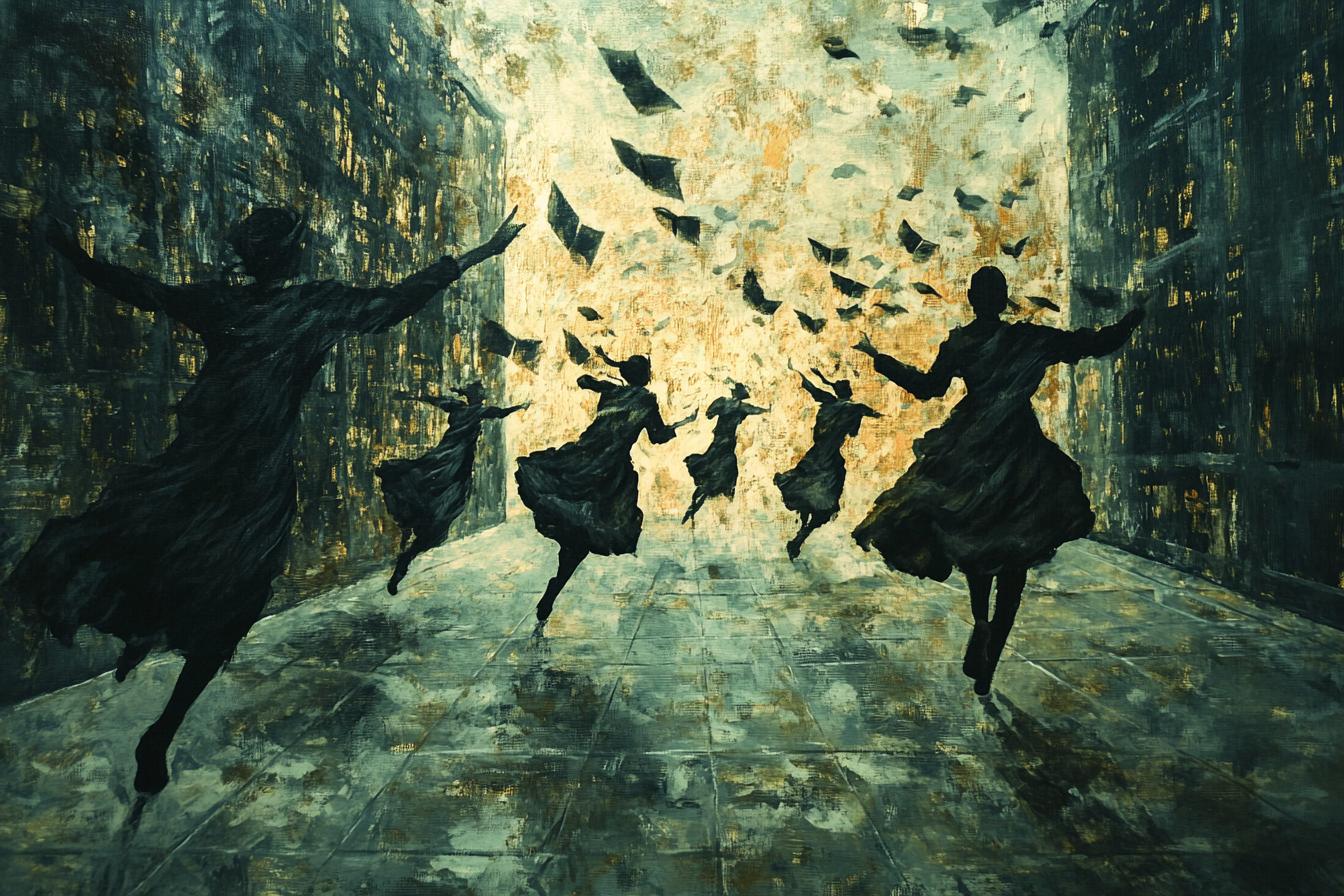Repetition, in its various forms, plays a crucial role in poetry, serving as a powerful tool for emphasis, rhythm, and meaning. Imagine a line like “The rain falls, falls, falls…” The repeated word “falls” not only creates a sense of the relentless rhythm of the rain, but also emphasizes its persistence and the speaker’s feelings of monotony or despair. Repetition can take many forms: simple word repetition, as in the example above, or more complex patterns like anaphora (repeating the same phrase at the beginning of successive lines or sentences) or refrain (repeating a line or phrase throughout a poem). These techniques add depth and layers to the poem, allowing the poet to explore themes and emotions with greater impact.
Beyond its technical aspects, repetition also creates a strong connection between the reader and the poem. Think about a song you love, a song that you sing along to even though you know the words by heart. That’s the power of repetition. It allows us to internalize the words, to feel their rhythm and meaning on a deeper level. In poetry, this can lead to a sense of intimacy and connection with the poet’s thoughts and feelings. Whether it’s a simple echo or a complex pattern, repetition is a vital element that adds richness and nuance to the poetic experience.

1. What Is the Role of Repetition in Poetry
Repetition, a fundamental element of poetry, serves various purposes in shaping the impact and meaning of a poem. Repetition can create rhythm and musicality, enhancing the flow and memorability of the work. It can also emphasize particular words or phrases, drawing attention to their significance and highlighting their emotional weight. Furthermore, repetition can create a sense of unity and coherence, binding different parts of the poem together and creating a cohesive whole.
Beyond its technical functions, repetition can also serve to underscore themes and ideas. Repeated words or phrases can act as a refrain, echoing throughout the poem and reinforcing its central message. Repetition can also build tension and suspense, as the poet gradually reveals the significance of the repeated elements. In this way, repetition becomes a powerful tool for crafting meaning and engaging the reader on both an emotional and intellectual level.
2. Emphasize Key Ideas
Repetition serves as a powerful tool for poets to highlight and underscore key ideas within their work. By repeating words, phrases, or even entire lines, poets draw the reader’s attention to specific concepts or emotions. This repetition creates a sense of emphasis and rhythm, ensuring that the reader absorbs and remembers the core message of the poem. Repetition can also be used to create a sense of urgency or to highlight the cyclical nature of life.
Furthermore, repetition can add texture and depth to a poem. When a poet repeats a word or phrase, it takes on a new meaning each time it appears. This layering of meaning allows the reader to engage with the poem on a deeper level, uncovering new insights and understanding the poet’s intentions. Repetition can also be used to create a sense of unity and cohesion within a poem, connecting different sections and ideas into a cohesive whole.
3. Create Rhythm and Flow
Repetition can create a rhythmic pulse within a poem. This rhythm can be achieved through the use of repeated sounds, words, or phrases. Imagine a drumbeat, a steady and consistent sound that keeps a rhythm. Just like a drumbeat, repeated elements in poetry create a predictable pattern that draws the reader in. This pattern can create a sense of movement and flow, making the poem more enjoyable to read. Imagine a river flowing smoothly, the water constantly moving forward. Repetition in poetry can act like that flowing water, guiding the reader through the poem’s journey.
Beyond the rhythmic quality, repetition also adds emphasis to certain ideas or emotions. When a poet repeats a word or phrase, they draw attention to it. Think of a friend shouting your name repeatedly to get your attention. Similarly, repeated words or phrases in poetry highlight important ideas and create a sense of urgency or intensity. This emphasis can help to create a more profound impact on the reader and leave a lasting impression. It’s like a spotlight shining on a specific part of the poem, drawing the reader’s focus to its significance.
4. Enhance Sound Devices
Repetition is a powerful tool for poets to create aural effects and enhance sound devices. By repeating sounds, words, or phrases, poets can emphasize certain ideas, create a sense of rhythm, and make their poems more memorable. For instance, alliteration, the repetition of consonant sounds at the beginning of words, can add a musical quality to a poem, making it more pleasing to the ear. Similarly, assonance, the repetition of vowel sounds, can create a sense of unity and flow within a poem.
Furthermore, repetition can create a sense of emphasis or intensity. When a poet repeats a word or phrase, they draw the reader’s attention to it and make it more significant. Repetition can also be used to create a sense of urgency, excitement, or even fear. In short, repetition is a versatile tool that poets can use to create a variety of effects in their work, adding depth and complexity to their meaning.
5. Establish Mood and Tone
Repetition in poetry plays a crucial role in establishing mood and tone by creating a sense of emphasis and rhythm. When a poet repeats a word, phrase, or line, it draws the reader’s attention to that specific element. This repetition can evoke a range of emotions, from joy and excitement to sadness and despair. For example, the repetition of a word like “love” can create a feeling of warmth and affection, while the repetition of a word like “death” can create a feeling of darkness and despair. Furthermore, repetition can also contribute to the overall rhythm and flow of a poem, making it more memorable and engaging for the reader.
In addition to evoking emotions, repetition can also create a particular tone or atmosphere. Repetition can make a poem sound more formal or informal, more serious or playful. The choice of words and the way they are repeated can significantly influence the overall tone of a poem. For instance, the repeated use of formal language and complex sentence structures can create a more formal tone, while the use of colloquialisms and simple sentence structures can create a more informal tone. Ultimately, repetition serves as a powerful tool for poets to shape the reader’s experience and create a specific mood and tone.
6. Build Memory and Impact
Repetition in poetry helps listeners retain information and form lasting impressions. When a poet uses the same word or phrase multiple times, it becomes a focal point, capturing the audience’s attention and embedding itself in their minds. This repetition creates a sense of rhythm and emphasis, making the words more memorable and impactful. Think about how a catchy song or slogan sticks with you long after you’ve heard it – repetition plays a key role in that memorability.
Beyond simply sticking in your mind, repetition can also enhance the emotional impact of a poem. By repeating a word or phrase, the poet amplifies its significance and the emotions associated with it. This can create a sense of urgency, longing, or despair, drawing the reader deeper into the poem’s world. In essence, repetition acts like a magnifying glass, focusing the reader’s attention and emotions on the most crucial parts of the poem.
Conclusions
So, you see, repetition in poetry is a real powerhouse! It’s not just about saying something over and over again. It’s a clever tool that poets use to make their words sing. They repeat phrases to hammer home important ideas, create a catchy rhythm that makes you want to read on, and even use it to make their poems sound super cool with alliteration and rhyme. Plus, repetition can make you feel a certain way, like happy or sad, and it helps you remember the poem long after you’ve finished reading it. It’s a pretty amazing trick, right?

